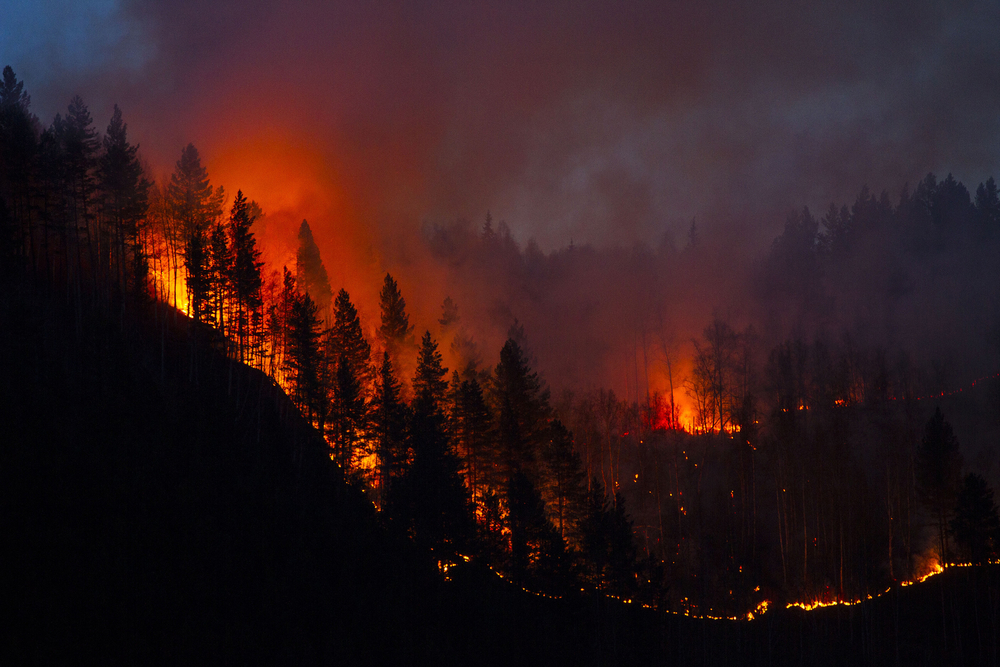Solar energy may have caused California’s wildfires
Taxpayer-subsidized, ratepayer-funded utilities that may be on the hook for billions of dollars in liabilities point to climate change as the major factor standing behind the recent California wildfires. PG&E CEO Geisha Williams has argued that dry, arid conditions associated with global warming were to blame for wildfires that devastated parts of northern California in 2018. Edison International CEO Pedro Pizarro has said much of the same with regard to the wildfires of 2017 that ignited in the southern part of the state.
But what if the blame belongs not with climate change, but with climate change policies that the utilities and their benefactors in government favor? There’s some evidence for this that insurance companies and displaced California residents might be interested in learning more about. As taxpayers and utility ratepayers, they are all spending part of their workday financing solar energy schemes that may have led to high-pressure conditions affecting electrical equipment, which in turn sparked the fires. How’s that?
Let’s look at just one example going back to December 2017, when wildfires devastated portions of Ventura and Santa Barbara counties. At the time, what became known as the Thomas Fire was the largest wildfire in California’s history. The fire erupted on Dec. 4, 2017, in the Santa Paula Canyon area just south of Thomas Aquinas College a little before 6:30 p.m., according to reports from the Ventura County Fire Department.
The latest figures show the Thomas Fire burned more than 280,000 acres before it was finally contained on Jan. 12, 2018. The fire destroyed more than 1,000 structures including hundreds of homes.
But there was also a second, related fire that broke out in Ojai, a small city in Ventura County, located a little northwest of Los Angles. This one hasn’t received as much attention in the national press, but it could be the key to unraveling what’s really going down with California’s misguided, big government policies. That fire broke out about an hour later after a transformer reportedly exploded in a residential area on Koenigstein Road. There are local witnesses who say they saw the flash of the explosion on the pole with the transformer, and others who say they heard the explosion.
Homeowners who have filed lawsuits against Southern California Edison in connection with the Thomas Fire argue that the utility, which is a subsidiary of Edison International, was negligent in terms of how it maintained the power lines. One of the lawsuits filed on behalf of an Ojai couple specifically addresses the explosion of the Edison transformer on Koenigstein Road, which was mounted on a pole. The couple lost their home in the fire.
Let’s take a hard look at the facts.
The transformer exploded around 7 p.m. at the end of a sunny day. Around that time, because of the solar energy mandates implemented under former Gov. Jerry Brown, a Democrat, California’s power grid must ramp up in the evening with conventional energy when the sun goes down. This cannot be done incrementally and gradually. Instead, California’s power grid experiences what is known as a “duck curve” as solar energy drops off and conventional energy ramps up.
So, the key questions are: “Did solar power cause the Thomas Wildfire?” Did it cause other wildfires?
There’s no denying the pressure that was put on the Edison transformer, and for that matter other transformers throughout the state. Certainly, correlation is not necessarily causation. But utilities and fire departments must have information and data associated with damaged transformers and other electrical equipment that could be insightful. The Thomas Wildfire is a good starting point for an investigation, but it is just one part of a larger story.
Keep in mind that Southern California Edison is also the subject of litigation filed in response to wildfires that broke out in 2018. So far, 170 homeowners and business ownerswho suffered damage in connection with the Woolsey Fire that broke out in November 2018 have filed suit in Los Angeles and Ventura Counties claiming the utility’s electrical equipment was responsible for the fire. Meanwhile, PG&E has announced that it will file for bankruptcy since it is now drowning under “at least $7 billion in claims from the Camp Fire,” according to news reports. The California Department of Forestry and Fire Protection has also blamed PG&E for some of the 2017 wildfires.
Without intervention from lawmakers and regulators, PG&E appears to be doomed. The Camp Fire is now on record as the deadliest fire in state history in terms of fatalities and destruction to infrastructure. Williams, the CEO, has announced that she is stepping down.

